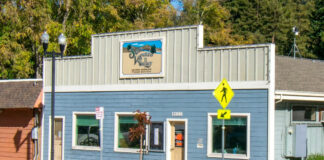Atrial fibrillation is an irregular often rapid heart rate, causing the heart’s two upper chambers to quiver instead of beating regularly. Fortunately, the lower two chambers still work normally and are able to pump the blood out of the heart, although not as efficiently.
It is this inefficient pumping that can cause the frequent symptoms of palpitations, shortness of breath, weakness, and lightheadedness, to name a few.
Atrial fibrillation is the most common heart arrhythmia. It is found in over 6 million Americans and accounts for some 90,000 deaths annually. It occurs in about 1-percent of individuals in their 60s, and increases to 12-percent for adults who are in their 80s. Some 30-percent of people with atrial fibrillation are unaware of their condition.
Atrial fibrillation can be brought on by increasing age, prior coexisting heart disease, high blood pressure, thyroid disease, and drinking alcohol. It can come and go, or it can be chronic and permanent. It is usually not life threatening, but it is a serious condition and needs to be treated.
There are two main goals in the treatment of atrial fibrillation. First is to attempt to control the rhythm, that is, get the rhythm back to the normal beating pattern. If a normal rhythm cannot be obtained, then the second goal is to control the heart rate. Ideally one would want to have the rate 80 beats per minute or below. Both of these goals can be accomplished with medication.
If one is very symptomatic or has relatively new onset atrial fibrillation, the heart can be electrically treated with a small electrical shock while under brief anesthesia. This treatment however, is rarely a permanent solution.
One of the main problems with atrial fibrillation is the chance of having a stroke. Blood clots can form in the quivering upper chambers. If a clot breaks loose it can go to the brain, causing a stoke.
This can be prevented by taking a blood thinning medication. Another complication is heart failure due to a weakening of the heart muscle.
There is a new advanced procedure called ablation. In this case a catheter is inserted in a large blood vessel in the groin and threaded up into the heart. Through highly technical computerized imaging, the trigger area for the fibrillation in the upper chamber is identified and lightly burned with high frequency radio waves. This destroys the area where the abnormal impulses of atrial fibrillation are generated. The success rate for this procedure is around 70-percent initially, and up to 90-percent if a second procedure is necessary.
Many people with atrial fibrillation are living relatively normal lives today when properly managed. It is a condition not to be feared, but to be monitored closely and treated appropriately by your doctor.
-Terry Hollenbeck, M.D., is an urgent-care physician at Palo Alto Medical Foundation Santa Cruz in Scotts Valley. Readers can view his previous columns on his website, valleydoctor.wordpress.com, or email him at va**********@*******al.net. Information in this column is not intended to replace advice from your own health care professional. For any medical concern, consult your own doctor.












